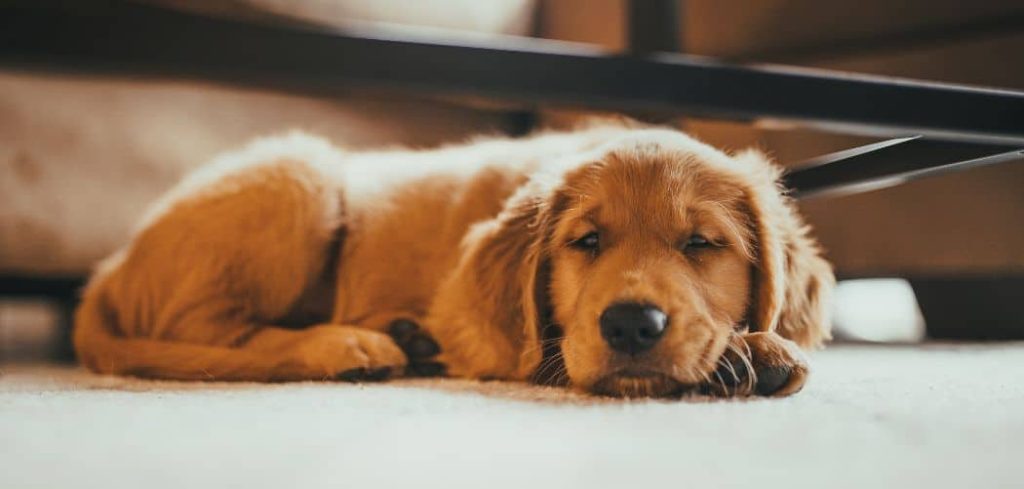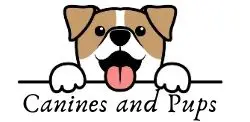If your dog is foaming at the mouth and drooling excessively, it can be a startling and worrying sight.
While some cases are harmless, others may signal a serious underlying medical condition that needs immediate attention.
We break down the common causes of dog foaming at mouth and drooling, what these symptoms could mean for your dog’s health, and when you should seek veterinary help.
Table of Contents
Here’s Why Dog Foaming at Mouth and Drooling Happens
When a dog is foaming at the mouth and drooling, it usually indicates excessive saliva mixed with air, creating a frothy appearance around the muzzle. This can happen for many reasons, ranging from harmless causes like stress, excitement, or overheating, to more serious health issues such as dental problems, nausea, poisoning, seizures, or neurological disorders.
Foaming often accompanies drooling when a dog is anxious, nauseous, or experiencing oral irritation.
While occasional foaming and drooling can be normal, especially after exercise or during stressful situations, persistent or sudden onset combined with other symptoms like vomiting, weakness, or unusual behavior should prompt immediate veterinary care.

Dog Foaming at Mouth and Drooling – What It Looks Like
Foaming at the mouth in dogs usually appears as white, frothy saliva around the lips and muzzle.
Drooling, or excessive salivation, refers to an unusually high volume of saliva dripping from your dog’s mouth.
When the two symptoms happen together, it can look dramatic and even alarming—but not all cases are cause for panic.
Before jumping to conclusions, it’s important to understand that dog drooling and foaming at the mouth can result from a wide range of conditions—some completely benign, others more serious.
Common Causes of Dog Foaming at Mouth and Drooling
1. Stress and Anxiety
One of the most common, non-medical reasons for dog foaming at mouth and drooling is stress.
Dogs may exhibit these symptoms when they’re experiencing high levels of anxiety or fear, such as during car rides, thunderstorms, fireworks, or vet visits.
Stress causes increased salivation, and panting or heavy breathing can aerate the saliva, resulting in a foamy appearance around the mouth.
If your dog’s foaming and drooling stop shortly after the stressor is removed, it’s likely a temporary reaction.
Other signs of stress in dogs include:
Pacing or restlessness
Lip licking
Trembling
Whining or barking
Hiding or trying to escape
2. Heat and Physical Exertion
After vigorous play or exercise, or during hot weather, it’s normal for dogs to pant heavily.
This panting causes saliva to mix with air, sometimes creating foamy drool.
In breeds with shorter snouts like Bulldogs and Pugs, this reaction is even more common due to inefficient cooling systems.
However, if your dog is foaming at the mouth and drooling heavily along with lethargy, vomiting, or collapse, you must seek immediate veterinary help as it could signal heatstroke—a potentially life-threatening emergency.
Related: Dog heavy breathing and drooling (Explained)
3. Nausea or Motion Sickness
Dogs that are nauseous, especially during car rides, may drool excessively and sometimes foam at the mouth.
Foaming and drooling in dogs due to nausea may be accompanied by:
Lip smacking
Swallowing repeatedly
Vomiting
Lethargy
If this only happens during car rides, your dog might be suffering from motion sickness, and your vet may suggest anti-nausea medication or conditioning techniques.
4. Dental Issues and Oral Injury
Pain or irritation in the mouth, such as infected gums, broken teeth, abscesses, or oral tumors, can cause dog drooling and foaming at mouth.
Dogs may also foam if they chew on something sharp that injures the inside of their mouth.
Other dental-related symptoms include:
Bad breath
Pawing at the mouth
Refusing to eat hard food
Blood in the saliva
Dental problems are often painful and can worsen over time, so if your dog is foaming at the mouth and drooling frequently, schedule a dental checkup with your vet.
Related: Dog Drooling and Yawning (Explained)
5. Ingestion of Bitter or Toxic Substances
Dogs may foam at the mouth and drool as a reaction to tasting something bitter, irritating, or toxic.
This is the body’s way of expelling or diluting the harmful substance. Examples include:
Toad venom (especially in southern regions)
Household cleaners
Insecticides or rodenticides
Bitter-tasting medications
Toxic plants
Dog foaming and drooling from poisoning is a medical emergency.
Symptoms often appear suddenly and may include vomiting, trembling, diarrhea, or seizures.
If you suspect poisoning, call your vet or a poison control hotline immediately.
6. Seizures and Neurological Conditions
Seizures, epilepsy, or other neurological disorders can also cause frothy drool and foaming at the mouth in dogs.
These conditions interfere with normal muscle control and salivary function.
During a seizure, your dog may:
Collapse
Paddle their legs
Lose consciousness
Foam at the mouth
Post-seizure behavior can include disorientation, confusion, and continued drooling.
If your dog has had a seizure, even just once, a vet evaluation is essential to determine the cause and need for treatment.
7. Rabies
While rare—especially in vaccinated pets—rabies is still a potential cause of dog foaming at the mouth and drooling.
Rabies affects the central nervous system and often leads to excessive saliva production, aggression, and neurological dysfunction.
Rabies is fatal and contagious to humans and animals, so it’s critical to keep your dog’s vaccinations current and to seek urgent veterinary care if your dog is bitten by a wild animal or starts exhibiting severe behavioral changes along with foaming.
8. Medications or Bitter-Tasting Treatments
Some medications or treatments, like dewormers or flea tablets, may taste so unpleasant that they cause temporary foaming at the mouth in dogs.
This usually resolves within a few minutes and is not a cause for concern unless accompanied by other troubling symptoms.
When Should You Be Concerned About Dog Foaming at Mouth and Drooling?
While some cases of dog foaming and drooling are harmless, you should contact a veterinarian immediately if your dog is experiencing any of the following:
Sudden, unexplained foaming or drooling
Signs of poisoning (vomiting, seizures, unsteady gait)
Suspected oral injury or trauma
Difficulty breathing
Drooling accompanied by other symptoms such as lethargy, loss of appetite, or behavioral changes
Repeated or prolonged episodes of foaming and drooling
A known seizure disorder that worsens
Prompt action can make a critical difference, especially in cases involving toxins, neurological issues, or severe dental infections.
How to Prevent Dog Foaming at Mouth and Drooling
Depending on the cause, here are steps you can take to reduce your dog’s risk of foaming and drooling episodes:
Regular dental care: Brush your dog’s teeth and schedule professional cleanings to prevent dental disease.
Monitor what your dog chews or eats: Keep toxic substances, plants, and small foreign objects out of reach.
Provide cooling options during hot weather: Avoid exercise during peak heat and ensure access to shade and water.
Help manage stress and anxiety: Desensitize your dog to stress triggers, provide a calm environment, or ask your vet about calming supplements.
Vaccinate against rabies and other preventable diseases: Follow your vet’s vaccine schedule to protect against serious conditions.
Use vet-recommended medications: Be cautious with new treatments, especially those with a bitter taste.
Key Takeaway: Dog Foaming at Mouth and Drooling
Dog foaming at mouth and drooling can be caused by a variety of factors—ranging from stress and physical exertion to dental issues, poisoning, seizures, and infectious diseases.
While some causes are harmless and resolve on their own, others can be serious and require immediate medical attention.
If your dog is suddenly foaming at the mouth and drooling excessively, especially alongside symptoms like vomiting, seizures, or behavioral changes, don’t delay—contact your veterinarian right away.
Early diagnosis and treatment can prevent complications and ensure your dog gets the care they need.
Understanding the possible causes and keeping a close eye on your dog’s behavior can help you catch problems early—and keep your furry companion happy and healthy.
